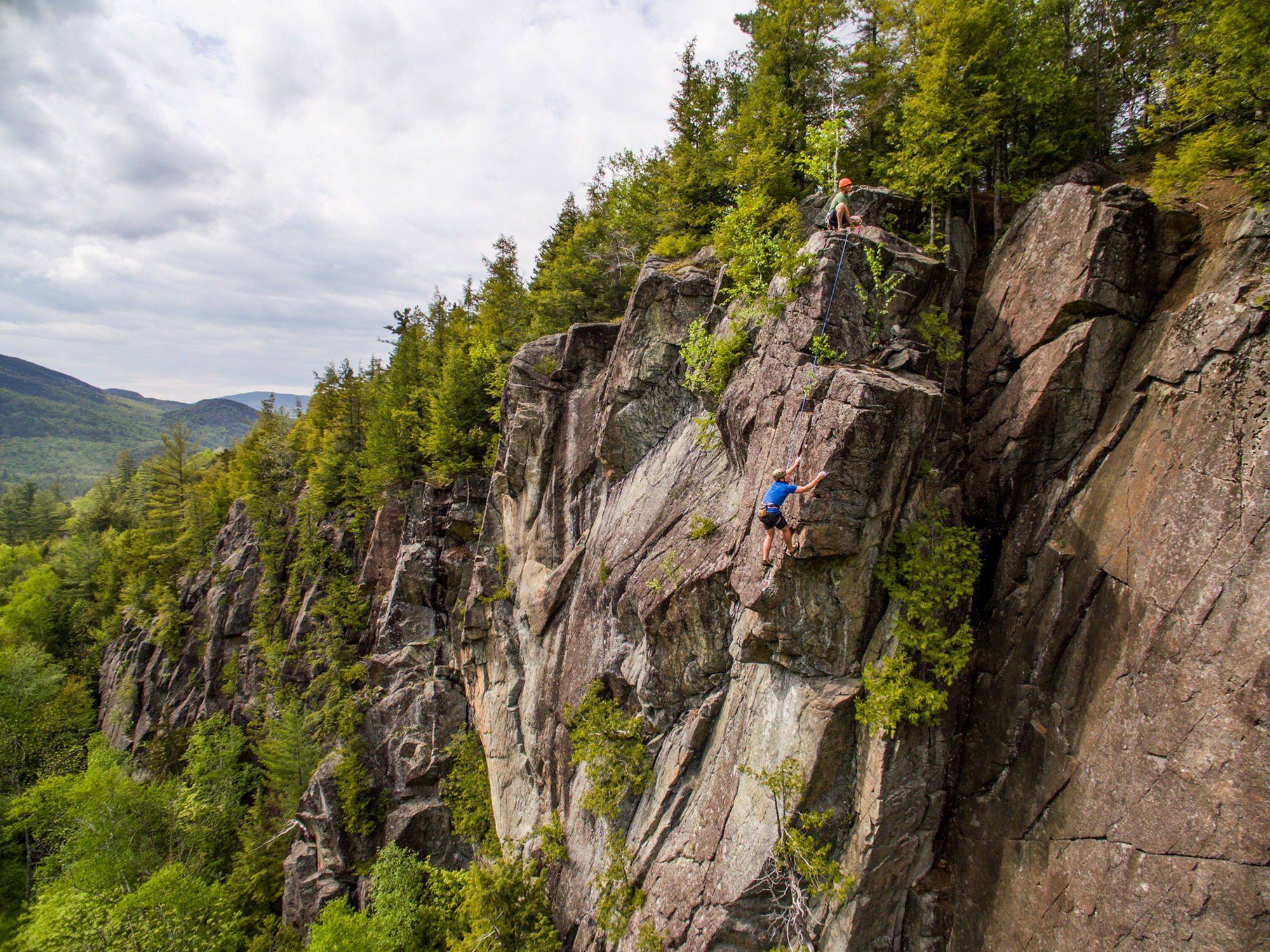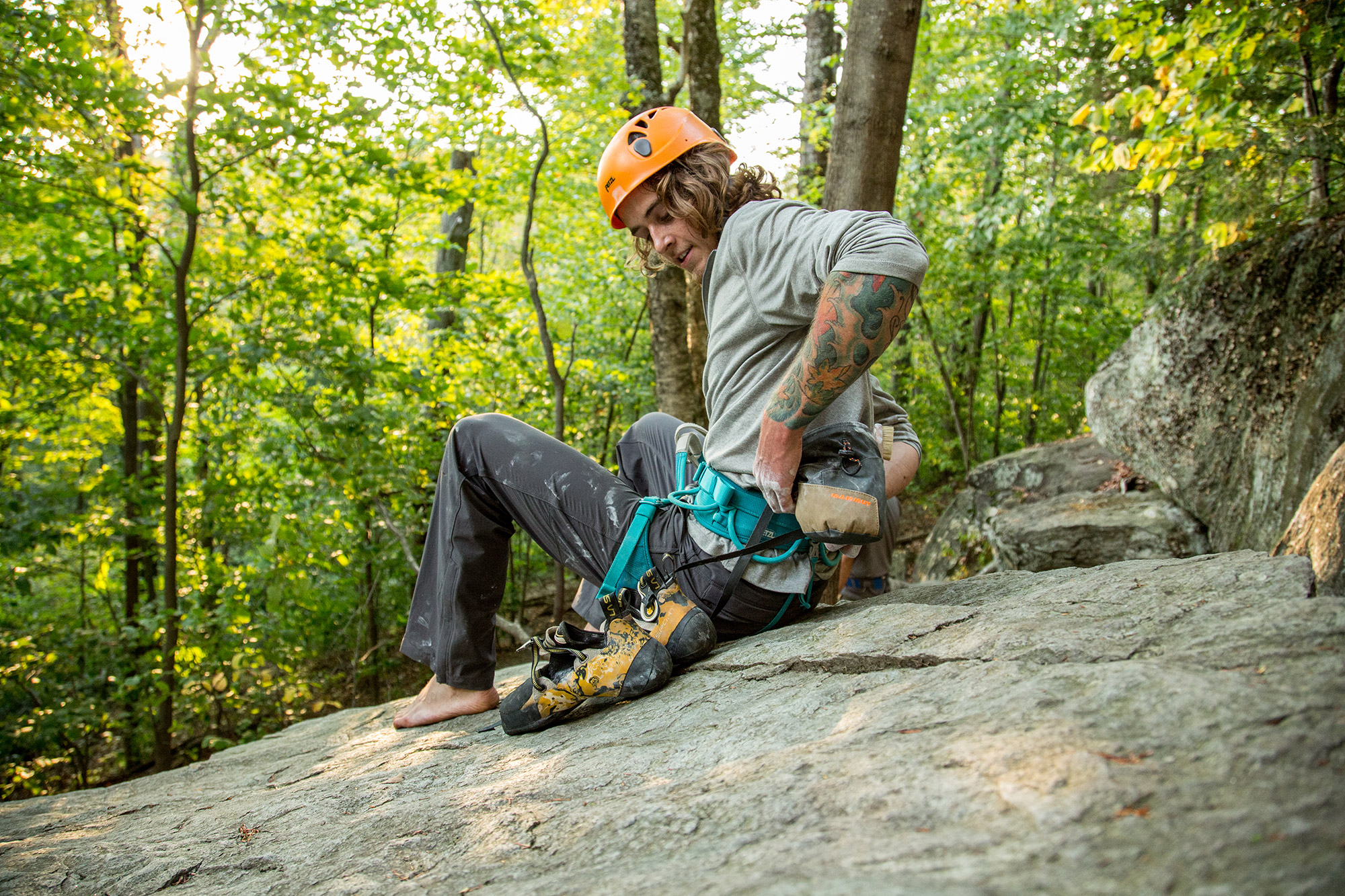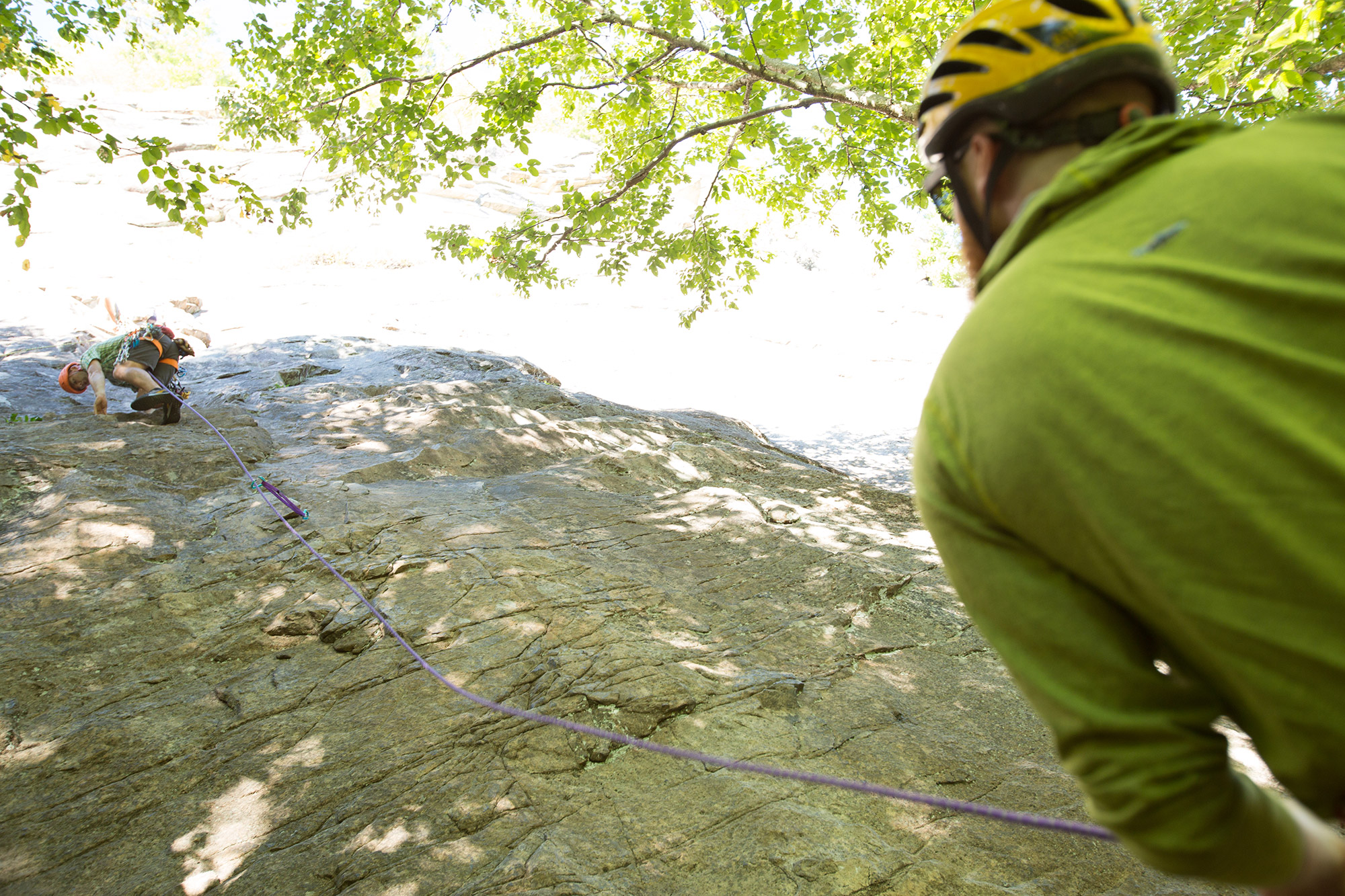Don’t worry, it’s not just you. Ever new climber makes some simple, avoidable mistakes when they begin their climbing career. Whether you’re tackling head-high boulders or massive multi-pitch routes, keep reading so that you can avoid these all-too-common issues.
1. Not breathing
Breathing should come naturally to climbers—after all, we spend our lives doing it. However, it’s common for climbers to hold their breath on challenging moves. Failure to breathe inhibits clear thinking, resulting in poor decision making and route finding. Additionally, shallow breathing or holding your breath increases the dreaded “pump,” allowing lactic acid to accumulate in your muscles. Fortunately, there’s an easy solution: Practice smooth, easy breathing while climbing casual routes and take care to continue it when climbing more difficult moves.
2. Just Looking Up
The vast majority of climbs start at the bottom and end at the top, so it makes sense that climbers are inclined to look up. However, it’s important when deciphering a route to look all around for holds, not simply up for the next handhold. Climbers who don’t look down may miss key footholds, important rests, and can overstrain their fingers and arms. The legs contain your largest muscles, put them to work!

3. Climbing with bent arms
Bent arms and engaged muscles make holds feel larger and grips more powerful to climbers, which is why so many climbers grab holds this way. Unfortunately, climbing with bent arms puts additional strain on a climber’s muscles, leading to faster fatigue and failure on a route. Practice climbing with straight arms to distribute the effort of climbing from your muscles to your skeleton. An added bonus of climbing with straight arms is that it makes climbers engage their legs (and the big muscles found there) more often.
4. Not checking knots
Thanks in part to rock gyms and sport crags, it’s easy to fit a lot of climbing into a condensed time which has led to complacency in the basic tenets of climbing safety. Before leaving the ground, you and your partner should check to ensure the climber is tied into the rope correctly and the belayer has properly rigged their device (and has their device secured with a locked carabiner). Additionally, tying a knot in the other end of the rope can ensure that a climber isn’t lowered off the end, an increasingly common accident.
5. Not paying attention to your surroundings
From walking under boulderers to belaying in rock fall zones to wandering over the rope of a person belaying, climbers can be careless—especially considering the ever-present dangers presented by the sport. Think about where you’re going and what you’re doing and be aware of the potential hazards surrounding you, whether it’s a cliff edge or another climber.

6. Not wearing a helmet
Why are so many rope climbers going helmetless? As helmets continue to get lighter, more comfortable, and better looking, there is no excuse not to wear one. Top-ropers are among the worst offenders, even though they’re vulnerable to rocks and debris knocked down by the rope and anchor located above them, as well as by other climbers. So too are sport climbers, who often claim the steepness of the routes negates the risk of rockfall. But the fact is that most mortals aren’t climbing walls that steep and sport climbers are still in danger of being flipped upside down during a fall and banging their head against the wall.
7. Putting the the rope over your shoulder before the first clip
There’s no logical reason for this pervasive trend. For one thing, there’s no tension in the system so pulling up the rope should be easy. And if you think the rope interferes with your footwork, you’re in big trouble on the rest of the climb. Finally, hanging the rope over your shoulder increases the odds of backclipping, meaning your “solution” just created a real problem. If you’re really concerned about clipping the first bolt quickly, get a stick clip.
8. Standing on the back of your shoes while belaying
This is an all-too-common mistake. Rock shoes are inherently uncomfortable, so it’s understandable that climbers seek relief from them by freeing their heels. However, standing on the heels of your climbing shoes deforms the heel cups and negatively impacts the fit of your shoes. If your shoes get uncomfortable, take them all the way off your feet and give them a chance to relax and to allow the shoes—and your feet—a chance to dry out between burns. It’s really not that hard to take them off and switch over to your approach shoes. (Need some help getting the right fit? Check out our guide on How to Choose Climbing Shoes.)

9. Carrying too much stuff
We see this common mistake everywhere from the climber bouldering with a harness to the traddie with a laminated belay card mixed into their rack. A good rule of thumb is to assess what gear you need before leaving the ground—making sure you bring only the necessities and leave everything else behind.
10. Not communicating early
Too many climbers communicate their intentions at inopportune moments. Think about it—how many times have you seen a new climber and an even newer belayer “discussing” a plan with a full pitch between them? Did you understand what they were saying? The easiest and best place to talk is when you’re standing on the ground next to each other. Before getting on a climb, communicate with your climbing partner what you need from them—whether it’s a spot or how you’re planning on approaching an anchor.
Got another tip for newer climbers? Share it in the comments.
Tim Peck and Doug Martland
Tim and Doug met long ago at the Eastern Mountain Sports in Canton, Massachusetts. Bonding over a love of slick Quincy Quarry granite, White Mountain sufferfests, and scheming up adventures while folding tee-shirts, today Tim and Doug collaborate to write about their favorite outdoor activities and occasionally get nostalgic about tee-shirt tables.
Related Posts
April 2, 2024
10 Tips for Mountain Biking Etiquette During Mud Season
One rough spring could ruin the…




